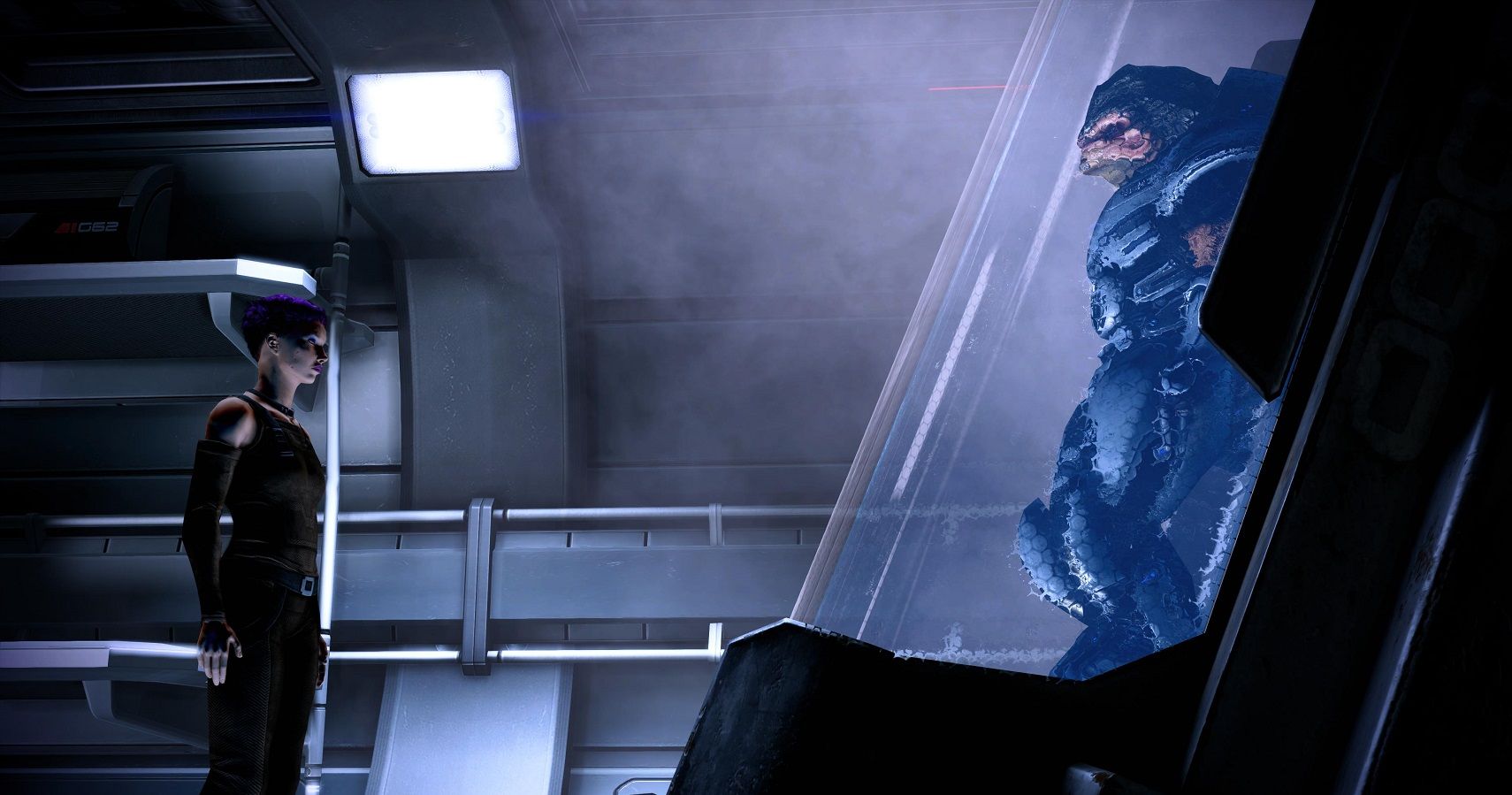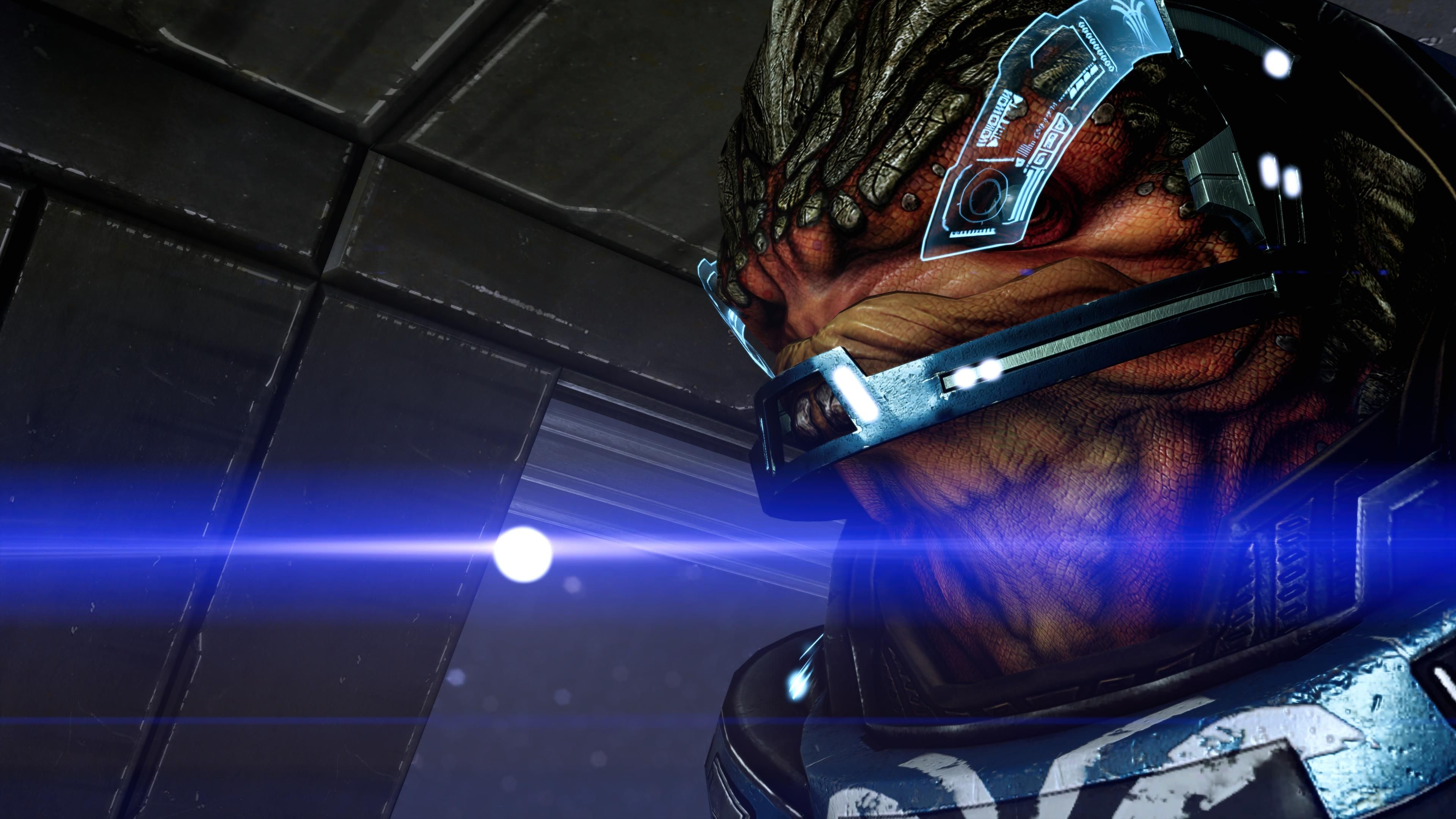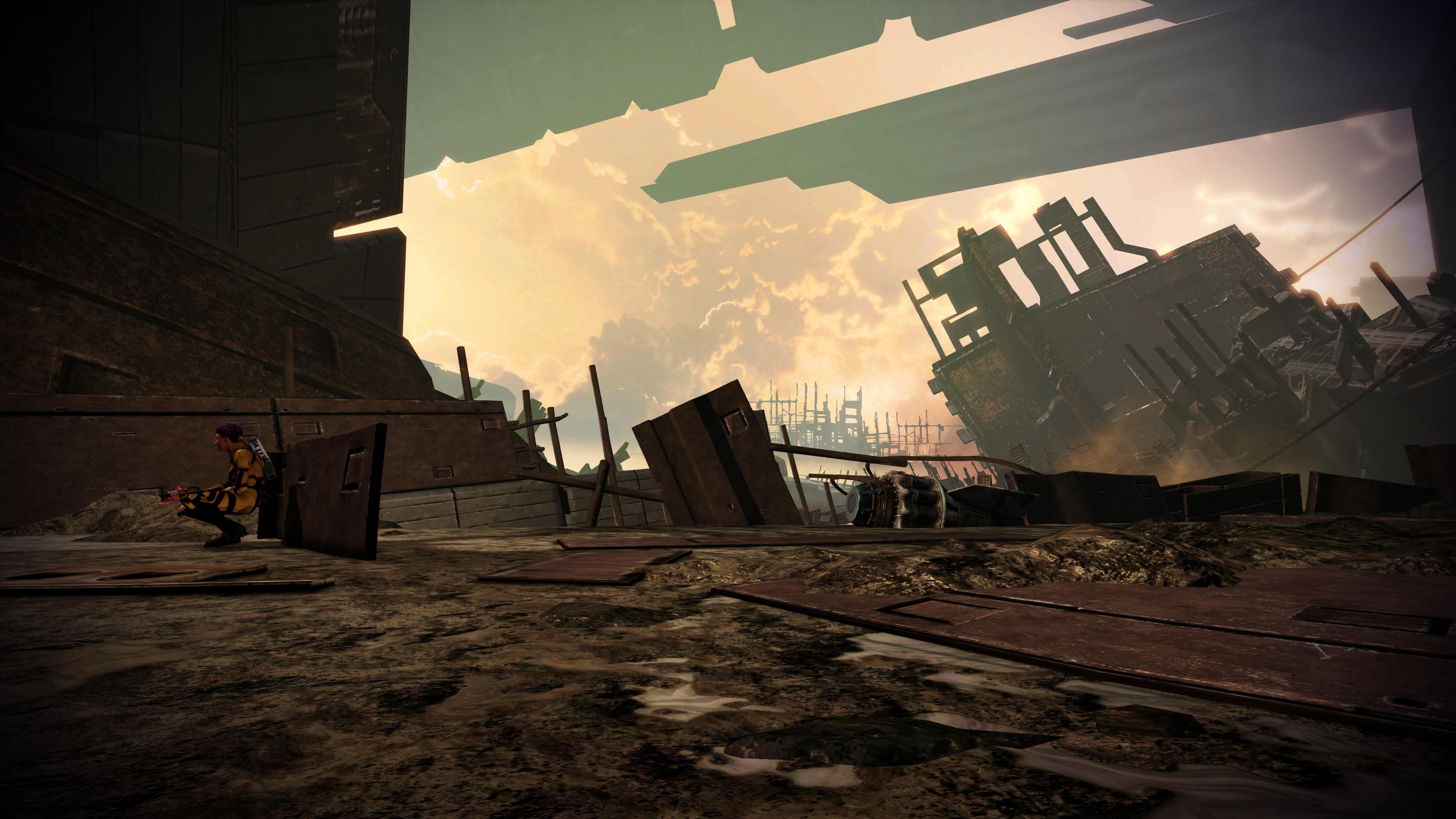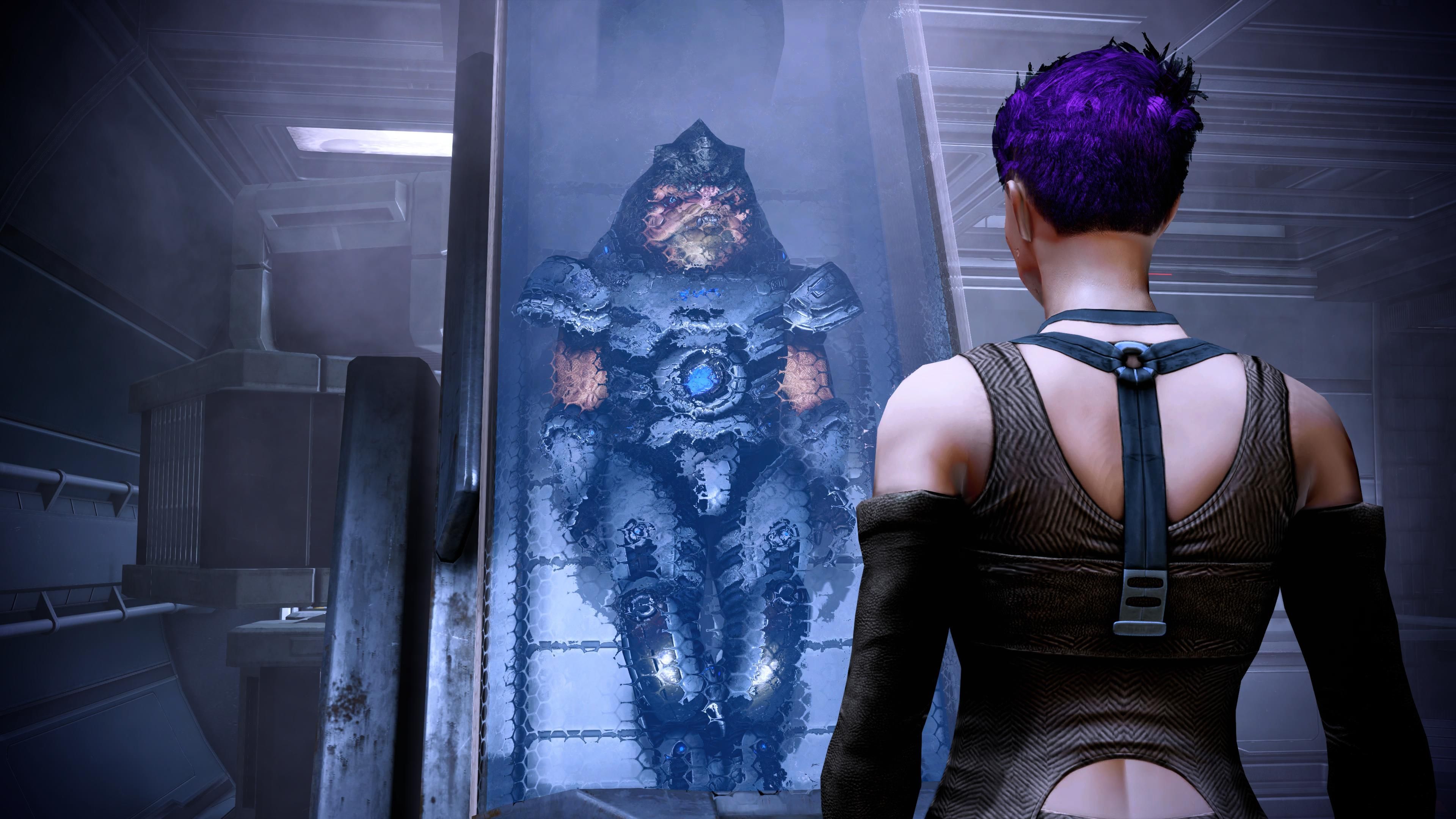The trouble with first impressions is that you only get to make one - at least, that’s how it goes for most people. Mass Effect’s Grunt, however, is so great that he gets to make two, and both of them are absolutely brilliant.
Mass Effect 2 is a very simple game, at its core. Get squadmates, make them loyal, save the galaxy. It’s very get cape, wear cape, fly. There is a narrative running through the full game, but when people talk about Mass Effect 2’s phenomenal storytelling, they aren’t talking about what happened on Horizon. They mean recruiting Thane, meeting Archangel, Tali’s loyalty mission, the feud between Jack and Miranda, and of course, recruiting Grunt.
When I say two first impressions, I don't mean in Mass Effect 2 and Mass Effect 3 - most characters get that, and it's Jack whose Mass Effect 3 development is the most impressive. I mean that in recruiting Grunt, the unique structure of his mission and his origins means he gets two chances to show you who he is. Last week, after playing through the first game in the series, I wrote about the lacklustre introductions in Mass Effect, how all you do is meet your squadmate and suddenly they're fighting by your side. I highlighted the differences between Garrus and Archangel in that article, but also specifically mentioned that Grunt had the best entry, and that if it lived up to my memory, I'd likely end up writing about it. Well, dear reader, I keep my promises. The best part is I had only remembered half of Grunt's introduction - his second first impression - so playing through Mass Effect 2 for the first time in at least five years meant it had the chance to blow me away all over again.
The first time you play the game, you’re unaware that Grunt is who you’re after. Instead, you’re after the Warlord, Dr Okeer. He’s a krogan scientist, of sorts, if by ‘scientist’ you mean irrational demagogue obsessed with the purity of his own race, cruel in his methods and callous in his disregard for the mortality of his own creations. Before you even reach him though, you only know of Korlus, the desolate garbage dump of a world you land on.
While Mass Effect 2 takes place across the whole galaxy, it often feels like you’re visiting places rather than planets. You go to cities, to docks, to settlements, to buildings. In ditching the Mako sections, Mass Effect 2 becomes a much more urbanised game, sending you on missions in tower blocks and warehouses and nightclubs. It takes on the pulse of the noir, with Shepard less of a space John McClane and more of a space Phillip Marlowe. Korlus though is an exception to this rule, and that allows it to distinguish itself from the much busier, more layered settings you visit.
Korlus is an oppressive, metallic wasteland. Beyond the fog of the bleached skyline, metal girders curl upwards at the sky as rusted structures crumble and wither. Mass Effect 2’s best set design is in the background - too much of the foreground is boxy and generic, designed for the cover shooter mechanics rather than the aesthetic. Perhaps more than anywhere else in the game, Korlus lets these aesthetics breathe.
The actual story on Korlus is nothing special - go from here to the end shooting Blue Suns to meet Okeer. However, halfway there you meet a seven day old, fully formed krogan who chooses to speak its first words to you. A reject of Okeer, it was bred for death and violence, a failed attempt to create a genetically perfect krogan, and thrown to the wasteland. It sees something in you, it detects something about your presence, that soothes it. While the gameplay going on around this krogan is just ‘get through these enemies by killing them’, there’s an almost mystical quality to this moment of calm that, combined with the violent and decaying setting, gives the whole planet an air of tragedy. Korlus is an overlooked planet in Mass Effect’s history because it has no iconic moment, no central structure, no memorable location. It’s just metallic rot extending outwards forever, with blood and violence and death. If it wouldn't make Nier fans hate me, I'd compare it to the sorrowful architecture of Nier: Automata.
Once you battle through and meet Okeer, you also find Grunt secured in his tank. He /is/ the genetically perfect krogan, designed as the ultimate being of death. And yet, through that first krogan, we already know Grunt is not so one-dimensional. There is a sense of morality, of purpose, even of blood soaked poetry in the rejected krogan, and it’s natural to think Grunt too may have hidden layers. Once Okeer is murdered as part of Korlus’ admittedly pedestrian plot, you return Grunt to the ship, and he gets to make a first impression all over again.
Back on the Normandy, you open Grunt’s tank, and his first instinct is violence. He slams Shepard against the wall, thick forearm at their neck, ready to push until it snaps. But, just like the first krogan we encounter on Korlus, there is more to it. Grunt is minutes old at this point, his existence in the tank comparable to the womb. This is life. His first gasp for breath is tinged with a rage, a need to kill, but also with thought - the first thought of his existence not poured directly into his mind by Okeer.
Grunt is contemplative, almost existential, as he comes to terms with life - no longer a concept for him, but a reality. He is alive. Shepard, remarkably cool under pressure, extends a truce to Grunt, while keeping a pistol fixed firm in his gut.




